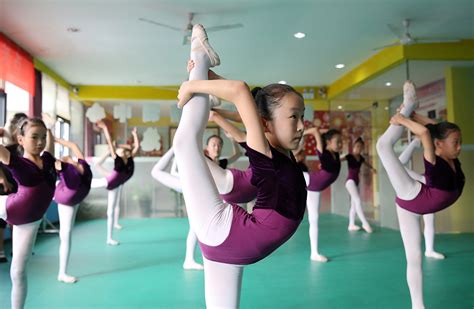舞蹈教育学课程
Title: Key Concepts in Dance Education
Introduction to Dance Education
Dance education encompasses a diverse array of disciplines, including ballet, contemporary, jazz, tap, and cultural dances, among others. It serves as a platform for artistic expression, physical fitness, cultural preservation, and social interaction. Understanding the key concepts in dance education is crucial for both educators and learners alike. Let's delve into some fundamental knowledge points:
1. Movement Fundamentals:
Dance education begins with understanding the basic principles of movement, including:
Body Awareness:
Developing an awareness of body parts, alignment, and posture.
Coordination:
Training the body to move fluidly and efficiently.
Balance:
Learning to distribute weight and maintain equilibrium while moving.
Spatial Awareness:
Understanding the use of space, levels, and pathways in movement.
Rhythm and Timing:
Mastering the ability to move in sync with musical beats and rhythms.2. Dance Techniques:
Different dance styles require specific techniques, which may include:
Ballet:
Emphasizes precision, grace, and technique, with a focus on turnout, pointed toes, and fluid movements.
Contemporary:
Characterized by versatility, fluidity, and expressiveness, incorporating elements from various dance styles.
Jazz:
Known for its energetic, dynamic movements, often influenced by popular music and culture.
Tap:
Focuses on creating rhythmic patterns through percussive footwork.
Cultural Dances:
Represent diverse cultural traditions, incorporating unique movements, costumes, and music.
3. Dance History and Appreciation:
Understanding the historical and cultural context of dance enriches students' appreciation for the art form. Key aspects include:
Historical Periods:
Studying the evolution of dance from ancient civilizations to contemporary times.
Significant Figures:
Learning about influential choreographers, dancers, and dance companies.
Cultural Context:
Exploring how dance reflects and shapes cultural identities and traditions.
Artistic Movements:
Examining how dance intersects with other art forms, such as music, visual arts, and literature.4. Performance Skills:
Preparing for performances is an essential aspect of dance education, involving:
Stage Presence:
Projecting confidence and charisma while on stage.
Expression:
Conveying emotions and narratives through movement and facial expressions.
Technique Execution:
Demonstrating mastery of choreography, transitions, and partnering skills.
Costuming and Makeup:
Understanding how costumes and makeup enhance the visual impact of a performance.5. Choreography and Composition:
Students explore their creative potential through choreography and composition, focusing on:
Movement Exploration:
Experimenting with different movement qualities, dynamics, and motifs.
Structural Elements:
Understanding concepts such as motif development, variation, repetition, and transition.
Spatial Design:
Utilizing space, levels, and formations to create visually compelling compositions.
Music Selection:
Choosing appropriate music that complements and enhances choreographic ideas.6. Dance Pedagogy and Teaching Methods:
For aspiring dance educators, understanding effective teaching strategies is essential. This includes:
Lesson Planning:
Designing wellstructured lessons that cater to students' skill levels and learning objectives.
Differentiated Instruction:
Adapting teaching methods to accommodate diverse learning styles and abilities.
Feedback and Assessment:
Providing constructive feedback and assessment criteria to facilitate student progress.
Classroom Management:
Maintaining a positive and safe learning environment conducive to creative exploration and skill development.Conclusion:
Dance education encompasses a rich tapestry of knowledge, spanning movement fundamentals, technique, history, performance skills, choreography, and teaching methods. By mastering these key concepts, students can cultivate not only their technical proficiency but also their artistic expression, creativity, and appreciation for the diverse world of dance. Whether pursuing dance professionally or as a recreational activity, a solid foundation in dance education is invaluable.
版权声明
本文仅代表作者观点,不代表百度立场。
本文系作者授权百度百家发表,未经许可,不得转载。









评论